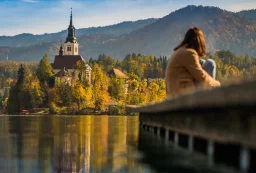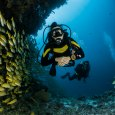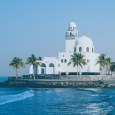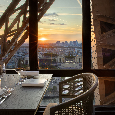
There is a certain wisdom in the dishes found at Boragó. Cultures, techniques, and traditions that can be traced back thousands of years simmer in the pot, roast on the grill, and sizzle in the pan. Moments later what appears at the table are meats, vegetables, and fish, all grown, caught, and gathered in the abundant land less than a stone’s throw away. In Santiago, Chile under the summit of the city’s tallest mountain Cerro Manquehue, an appreciation and innovation of indigenous Mapuche ingredients as well as foraging and cooking practices reimagines Latin American fine dining on the global stage. While this may be the perch of the world-renowned chef Rodolfo Gúzman, his team reaches all corners of the vast country, with over 200 foragers and food producers finding legendary ingredients with unparalleled expertise. Once these ingredients make their way to Boragó and become magical dishes crafted by Guzmán, there is a sublime dining experience to be found.
Boragó claimed its spot on the World’s 50 Best Restaurants list in 2018 by offering a one-of-a-kind luxury culinary experience that revitalises the gastronomical potential of ingredients locally sourced in Chile. As Guzmán shared, in his eyes the Chilean fine dining scene he was accustomed to often prioritised ingredients and cooking techniques from countries such as France and Spain. While taking inspiration from others is important, the chef identified a lack of investment and imagination when it came to celebrating the different Latin flavours that existed in his own country. He especially saw the need to foster a deeper appreciation for the indigenous Mapuche cultural traditions and practices when it came to sourcing and cooking food in the Latin American fine dining world.
Responding to this need, Gúzman founded Boragó in 2006. Having trained in the elite enclave of the restaurant Mugaritz in Spain, Gúzman embarked on the long road ahead to materialising his vision for rediscovering the meaning of Chilean cooking and ingredients. To do so, he felt the call to return to his homeland. The Andes mountains rise to the East, the fertile Central Valley offers agricultural abundance, and the coastal range of mountains to the West line the Pacific Ocean. With such vast variety in topography, it only made sense for Gúzman to come home, root himself in the lands and waters of Chile and the rich histories of what they have meant to the Mapuche people, and thereby begin the journey of redefining Chilean fine dining and, indeed, Latin American fine dining as a whole.
"With such vast variety in topography, it only made sense for Gúzman to come home, root himself in the lands and waters of Chile and the rich histories of what they have meant to the Mapuche people, and thereby begin the journey of redefining Chilean fine dining."
 Indulging in the Tasting Menus of Boragó
Indulging in the Tasting Menus of Boragó
With tasting menus that range from ten to twenty courses, the menu at Boragó, aptly named Endémica, is a delicious peak into the encyclopaedic wealth of knowledge that Gúzman and his team have amassed on different Latin flavours found in ingredients endemic to Chile. Each dish is a testament to Boragó’s harmonic coordination with the country’s microseasons and the foragers and small producers that carry generations of wisdom in making the most of each raw, fresh ingredient.
Attuned to the microseasons of the country’s varying landscapes, the tasting menu keeps evolving to celebrate and bring to the plate the riches of rare ingredients only available at certain times of the year. Examples of these include the precious pink grapes from a plant native to Chile known as sea-urchin cactus or Quisco. In fact, you only have to look to the many flowers that are key players in Boragó’s offerings, to understand the exclusivity of the ingredients, with stalwarts including the flowers of desert plants that only come to bloom once a year. From one dish to the next, it is not just what is on the plate that shines. Accompanying wines represent the unfathomable diversity of Chile’s geographical territories as Chef Gúzman is always looking far and wide for a range of offerings that celebrate the country’s history of wine and the family-run businesses that keep the traditions of wine alive.

One visually stunning signature dish at Boragó is the grilled duck, sourced from Boragó’s very own farm. In this main course, duck hearts are grilled in duck fat and red plum leaves. The aging process in beeswax gives the meat new depths of flavour as does the hint of murra-miso that comes through from the marinated leaves. On the plate, each succulent portion of duck can be found under a red plum leaf that has been carefully draped over it. This makes the luxury culinary experience all the more delightful with the mystery of unveiling one delicious morsel after another.

As for one of the three famous desert courses, expect delicately concocted dishes such as the Autumnal special of roasted apple stuffed with the wild crabapples of Patagonia. This dish comes with the carefully derived extracts of native Chilean trees to round out the earthy flavours of Autumn forests. Finally, in a surprising twist that is true to Gúzman’s love affair with the sea, this desert also playfully uses Chilean sturgeon caviar to add contrast to and enrich the sweetness.
"While it would take many trips to experience Chile’s majestic mountains, valleys, coastlines, and glaciers, one adventurous meal at Boragó is enough to pique your curiosity and appreciation for the wealth of ingredients and flavours that make up these territories."
Sustainability is not an afterthought at Boragó, it is front and centre in everything they do. Rather than seeing it as a new-age effort, Gúzman recognises that growing his restaurant in a sustainable manner is a way of walking in the footsteps of those who treated the ancestral lands of Chile with respect and fostered a deep connection to its bounties. Who better to learn from in this venture than the illustrious indigenous Mapuche people, whose foraging and cooking practices shape the fabric of Chile’s gastronomical history? Thus, paying homage to this history of sustainability, Boragó was recognised by the Flor de Caña Sustainable Restaurant Award in the 2021 World’s 50 Best Restaurants awards.

A vital element of Boragó’s environmentally conscious approach is the way they empower over 200 small local producers to do what they do best in growing, fishing, and foraging for the restaurant’s ingredients. In this way, the local communities that have lived off the land’s resources for generations are given the spotlight and the chance to continue their sustainable agricultural and fishing practices.
By investing in these practices, Boragó is not only doing their part to make sure that these produces can continue their work, but also highlighting for the entirety of Chile the importance of conserving the rich variety of indigenous species. Closer to home, Boragó cultivates their very own biodynamic farm located half an hour away from the restaurant. Constantly expanding their scope, this farm produces vegetables, milk, and ducks for the unflinching standards of Chef Guzmán.

Like any good mad scientist’s lair, Boragó’s talented team dreams up wild ideas at the restaurant’s very own research kitchen. Here they test out different methods, informed by cutting-edge food science, to better understand and imaging new possibilities for the ingredients of Chile that have been foraged and used by the Mapuche people throughout history. Gúzman shares that one of the proudest creations in this test kitchen has been a fermenting process that imbues vegetables with the soft, melted textures found inside Camembert.
This technique has been used in increasingly creative ways for Boragó’s menu to reimagine Latin American fine dining. For instance, with this science, the team at Boragó was able to treat pumpkins, creating a delightfully cheesy texture that deepens further in flavour when roasted as a serving dish for a warm ceviche of wild mushrooms. This is the kind of inventive, cross-cultural thinking that you can expect to find in the way ingredients are treated at Boragó.
 To partake in the Edémica feast at Boragó is to step into Rodolfo Gúzman’s legendary brainchild that has revitalised the meaning of Chilean fine dining. While it would take many trips to experience Chile’s majestic mountains, valleys, coastlines, and glaciers, one adventurous meal at Boragó is enough to pique your curiosity and appreciation for the wealth of ingredients and flavours that make up these territories. Just one meal won’t be enough though as you’ll be coming back for more in no time.
To partake in the Edémica feast at Boragó is to step into Rodolfo Gúzman’s legendary brainchild that has revitalised the meaning of Chilean fine dining. While it would take many trips to experience Chile’s majestic mountains, valleys, coastlines, and glaciers, one adventurous meal at Boragó is enough to pique your curiosity and appreciation for the wealth of ingredients and flavours that make up these territories. Just one meal won’t be enough though as you’ll be coming back for more in no time.
















